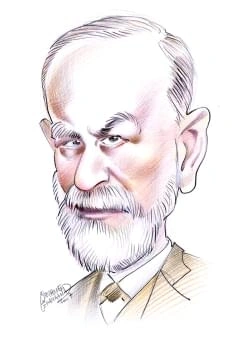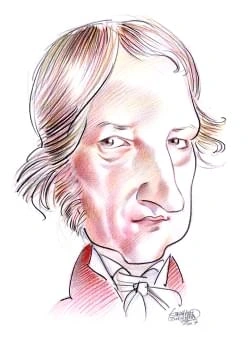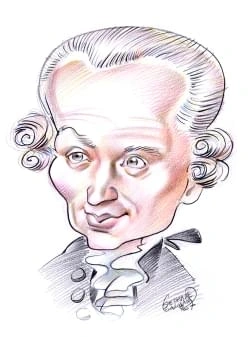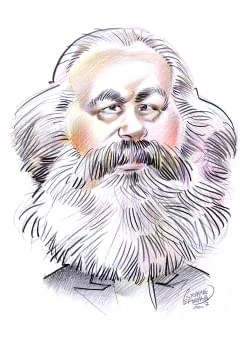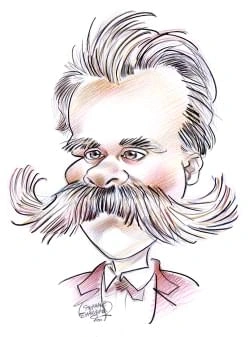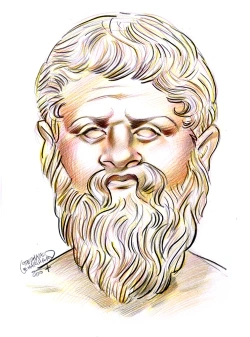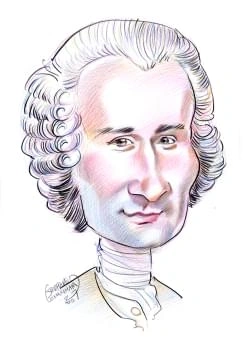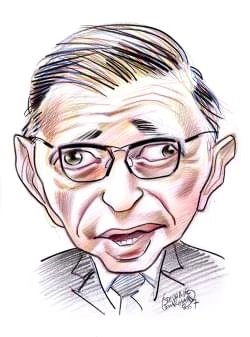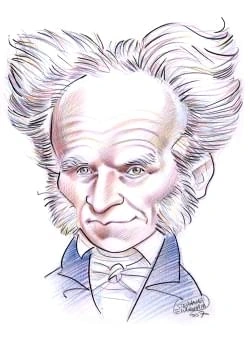97 résultats pour "painting"
-
Franz Kline
1910-1961
Les toiles de feu Franz Kline ont à juste titre acquis une place durable parmi les oeuvres
américaines les plus notables d'après guerre et ont fait de Kline un chef du mouvement dit
Expressionnisme abstrait ou action-painting.
oblitéré par les traits hardis à l'encre noire, par le dialogue entre ces puissantes taches sombres et le fond blanc. Il impressionné par la force d'expression de cette image et par les possibilités de la ligne en tant que forme et de l'espace lui-même en tant que forme. Délibérément son style changea immédiatement et il concentra dès lors toute son énergie à étudier tout ce qu'impliquait sa découverte. Il ne tarda pas à s'imposer brillamment dans le monde de l'art avec ce nouveau vocabulaire. E...
- Poseidon Greek Sea god and one of the Olympian gods; son of Cronus and Rhea; brother of Zeus, Hades, Demeter, Hera, and Hestia; husband The Roman goddess Pomona displays her fruits of plenty in the painting by French artist Nicholas Fouche (1653-1733).
-
art brut
unconventional materials (glass; textile fragments; buttons; butterfly wings) to his paintings. The use of the unconventional materials suggest that the artist is associated to the art informel but this is a pretext for Dubuffet to « build » his art brut in the 1945. The artist is interested by the popular arts, the graffiti, kids drawings and the mental ill ( insane ) artworks. In his artistic process, he assumes that art should be practice by anybody that doesn't need talent or i...
-
Surrealism
I
INTRODUCTION
Surrealism, artistic and literary movement that explored and celebrated the realm of dreams and the unconscious mind through the creation of visual art, poetry, and
motion pictures.
Hieronymus Bosch’s The Garden of Earthly Delights (about 1505-1510).© 2008 Salvador Dali, Gala-Salvador Dali Foundation / Artists Rights Society (ARS), New York./Bridgeman Art Library, London/New York Dreams, according to Freud, were the royal road to studying the unconscious, because it is in dreams that our unconscious, primal desires manifest themselves. Theincongruities in dreams, Freud believed, result from a struggle for dominance of ego and id. In attempting to access the real workings of...
-
Indian Art and Architecture
I
INTRODUCTION
Art on the Indian Subcontinent
This map highlights places in India and Pakistan where prominent examples of Indian art and architecture have been
produced.
Sun Temple of KonarakThis 13th-century relief depicting a wheel of the chariot of Indian sun god Surya is situated in the Konarak temple. Thetemple, dedicated to Surya, is situated at Puri in the Gulf of Bengal.Keren Su/Corbis The arts of India expressed in architecture, sculpture, painting, jewelry, pottery, metalwork, and textiles, were spread throughout the Far East with the diffusion ofBuddhism and Hinduism and exercised a strong influence on the arts of China, Japan, Myanmar (formerly known...
-
Roman Art and Architecture - History.
Racecourses or circuses were also built in many cities for holding chariot races and horse races. Rome’s circus-shaped Piazza Navona occupies the site of one that wasbuilt during the reign ( AD 81-96) of the emperor Domitian. The largest circus in Rome, the Circus Maximus, held about 200,000 spectators. E Public Baths Large cities and small towns alike also had public baths ( thermae ); under the Republic they were generally made up of a suite of dressing rooms and bathing chambers with hot- ,...
-
Odyssey
I
INTRODUCTION
Odyssey, ancient Greek epic poem in 24 books attributed to the poet Homer.
Ulysses in the Cave of PolyphemusOn their return from the Trojan War, Odysseus (also known as Ulysses) and his men are taken prisoner by the one-eyedgiant Polyphemus, who is gradually eating them. After blinding Polyphemus, the remaining men escape by holding on tothe belly of the giant’s sheep. Knowing that the Greeks will try to escape, Polyphemus touches each sheep as it leaves thecave but fails to check underneath. This painting by 17th-century Flemish artist Jacob Jordaens is in the Pushkin...
-
House (architecture)
I
INTRODUCTION
Trulli in Alberobello, Italy
Alberobello, in the Apulia region of southeastern Italy, is noted for its unusual limestone houses known as trulli (from
Greek trullos, dome).
Fresco in the Villa of the Mysteries, PompeiiThe Villa of the Mysteries, Pompeii, Italy (built about 50 bc), featured a large hall with this mural encircling it. The mural ispainted in the Second Style of Roman painting. (Historians of art recognize four periods or styles in Roman wall painting.)The mural in the Villa of the Mysteries is thought to depict the initiation rituals of a mystery religion. For this reason, it hasbeen conjectured that the hall was used for cult rituals.Bridgeman Art Li...
-
-
Moderne Kunst und Architektur.
Neue Sachlichkeit hervor. Vertreter dieser Richtung waren u. a. Alexander Kanoldt, Georg Schrimpf und Christian Schad. 2.5. 2 Kubismus Der Kubismus versuchte noch radikaler als die avantgardistischen Strömungen zuvor, eine Abstraktion von der äußeren Wirklichkeit zu erreichen. Picassos Gemälde Les Demoiselles d’Avignon (1907, Museum of Modern Art, New York) ist hierfür das viel zitierte Musterbeispiel (siehe oben). Im Kubismus etwa Picassos und Braques (zwischen 1907 und 1914) wird der zweidi...
-
Archaeology.
Prehistoric archaeology is practiced by archaeologists known as prehistorians and deals with ancient cultures that did not have writing of any kind. Prehistory, a term coined by 19th-century French scholars, covers past human life from its origins up to the advent of written records. History—that is, the human past documented insome form of writing—began 5000 years ago in parts of southwestern Asia and as recently as the late 19th century AD in central Africa and parts of the Americas. Becaus...
-
Byzantine Art and Architecture
I
INTRODUCTION
Archangel Michael
This depiction of the archangel Michael, in Saint Mark's Cathedral in Venice, Italy, is an example of ancient enamel art.
This Byzantine ivory relief shows Christ the Pantocrator, or ruler of the world, raising his hand in a gesture of blessing. Itcomes from the cover of a lectionary, or book containing portions of the scriptures, and dates from the second golden ageof Byzantine art, the late 10th century. The relief is in the Fitzwilliam Museum, Cambridge, England.Bridgeman Art Library, London/New York Mosaics were the favored medium for the interior adornment of Byzantine churches. The small cubes, or tesserae, t...
-
Michelangelo
I
INTRODUCTION
Michelangelo (1475-1564), Italian painter, sculptor, architect, and poet whose artistic accomplishments exerted a tremendous influence on his contemporaries and on
subsequent European art.
(17 ft) tall, was carved from a block of stone that another sculptor had left unfinished. Michelangelo drew on the classical tradition in depicting David as a nude,standing with his weight on one leg, the other leg at rest ( see contrapposto). This pose suggests impending movement, and the entire sculpture shows tense waiting, as David sizes up his enemy and considers his course of action. While David reveals Michelangelo's expert knowledge of anatomy (he had been dissecting corpses for about...
-
Michelangelo.
(17 ft) tall, was carved from a block of stone that another sculptor had left unfinished. Michelangelo drew on the classical tradition in depicting David as a nude,standing with his weight on one leg, the other leg at rest ( see contrapposto). This pose suggests impending movement, and the entire sculpture shows tense waiting, as David sizes up his enemy and considers his course of action. While David reveals Michelangelo's expert knowledge of anatomy (he had been dissecting corpses for about...
-
Ancient Rome .
attributed to Numa, including the selection of virgins to be priestesses of the goddess Vesta. He also established a calendar to differentiate between normal workingdays and those festival days sacred to the gods on which no state business was allowed. His peaceful reign lasted from 715 to 673 BC. Under Tullus Hostilius (672–641 BC) the Romans waged an aggressive foreign policy and began to expand their lands by the conquest of nearby cities like Alba Longa. When the warlike King Hostilius co...
-
Ancient Rome - USA History.
attributed to Numa, including the selection of virgins to be priestesses of the goddess Vesta. He also established a calendar to differentiate between normal workingdays and those festival days sacred to the gods on which no state business was allowed. His peaceful reign lasted from 715 to 673 BC. Under Tullus Hostilius (672–641 BC) the Romans waged an aggressive foreign policy and began to expand their lands by the conquest of nearby cities like Alba Longa. When the warlike King Hostilius co...
-
Achilles
I
INTRODUCTION
Thetis Dipping Achilles in the Styx
The sea nymph Thetis is seen dipping her son Achilles in the River Styx to make him immortal.
Priam Reclaims the Body of HectorThe relief sculpture on this ancient Roman sarcophagus, discovered in northwestern Greece, depicts an event fromHomer’s epic poem the Iliad. In this scene Priam, the king of Troy, reclaims the body of his son, Hector, from the Greekwarrior Achilles, who has killed Hector in battle. Hector’s recumbent body is seen in front of a chariot.Chris Hellier/Corbis Achilles fought many battles during the Greeks’ ten-year siege of Troy. When the Mycenaean king Agamemnon sei...
-
-
contemporain, art - peinture.
3. 5 L’Arte povera L’art italien semble également se renouveler dans les années 1960 avec l’apparition de l’Arte povera. Les artistes utilisent des matériaux « pauvres » pour la conception de leurs œuvres et permettent ainsi d’effacer la distinction conventionnelle entre l’art et la vie quotidienne. Les premières œuvres éphémères, voire périssables, apparaissent avec Giovani Anselmo (1934- ) ou avec le Grec Jannis Kounellis. Mario Merz montre l’harmonie qui unit les cultures nomades à la nature...
-
contemporain, art - sculpture.
3. 5 L’Arte povera L’art italien semble également se renouveler dans les années 1960 avec l’apparition de l’Arte povera. Les artistes utilisent des matériaux « pauvres » pour la conception de leurs œuvres et permettent ainsi d’effacer la distinction conventionnelle entre l’art et la vie quotidienne. Les premières œuvres éphémères, voire périssables, apparaissent avec Giovani Anselmo (1934- ) ou avec le Grec Jannis Kounellis. Mario Merz montre l’harmonie qui unit les cultures nomades à la nature...
-
William Blake
I
INTRODUCTION
William Blake (1757-1827), English poet, painter, and engraver, who created an unusual form of illustrated verse; his poetry, inspired by mystical vision, is among the
most original, lyric, and prophetic in the language.
Your spring & your day are wasted in play,And your winter and night in disguise. Both series of poems take on deeper resonances when read in conjunction. Innocence and Experience, “the two contrary states of the human soul,” are contrasted insuch companion pieces as “The Lamb” and “The Tyger.” Blake’s subsequent poetry develops the implication that true innocence is impossible without experience,transformed by the creative force of the human imagination. III BLAKE AS ARTIST The LambThe Lamb...
-
GLARNER Fritz : Relational Painting, tondo n° 52
GLARNER Fritz Relational Painting, tondo n° 52 Né à Zurich, 1899 Mort à Zurich, 1972 L'installation de Mondrian à New York en 1940 marque une étape décisive de la carrière de Glarner qui y vit déjà depuis 1935. Lui qui cherche à "apporter une interrelation plus pure et plus étroite entre la forme et l'espace" aban donne alors la peinture figurative pour une abs traction exempte de toute référence au réel. Il joue sur les for...
-
Silk Road - History.
and high in value because they were carried on the backs of the limited number of camels in each caravan. Thus, of necessity they were luxury items, not bulky rawmaterials or essential goods for daily use. The oases and towns along the route, which were located in or near remote areas, profited from the Silk Road trade and reliedon it for their existence. The great empires of Persia, China, and Rome, however, could easily have survived without the commerce in luxury goods. V SPREAD OF RELIGION A...
-
Lebanon (country) - country.
during the civil war. Within the country, thousands of Shia Muslim refugees fled fighting in southern Lebanon in the 1990s and moved into shantytowns in Beirut’ssouthern suburbs. Lebanon’s major cities were greatly affected by the civil war. Beirut has gradually regained most of its prewar population and remains the country’s largest city. Tripoli,the northern port, is the second largest city. Jūniyah, north of Beirut, was developed as a wartime port and subsequently had a population boom. Za ḩl...
-
Theater
I
INTRODUCTION
The Art of Theater
BBC Worldwide Americas, Inc.
Theater at EpidaurusAncient Greek dramas were performed in open-air theaters like this one in Epidaurus, Greece, which was designed byPolyclitus the Younger in 350 bc. A festival of ancient Greek drama is still held in the summer in this 14,000-seat theater.Roger Wood/Corbis Fundamental to the theater experience is the act of seeing and being seen; in fact, the word theater comes from the Greek word theatron , meaning 'seeing place.' Throughout the history of world cultures, actors have used...
-
Ancient Greece.
The first culture of Aegean civilization on the Greek mainland is named Mycenaean for the palace at Mycenae on the Pelopónnisos. Scholars call the Mycenaeans the“earliest Greeks” because they are the first people known to have spoken Greek. Mycenaean culture developed later than Minoan. The ancestors of the Mycenaean people wandered onto the mainland from the north and the east from about 4000 to2000 BC, mixing with the people already there, and by about 1400 BC the Mycenaeans had become very...
-
-
Ancient Greece .
The first culture of Aegean civilization on the Greek mainland is named Mycenaean for the palace at Mycenae on the Pelopónnisos. Scholars call the Mycenaeans the“earliest Greeks” because they are the first people known to have spoken Greek. Mycenaean culture developed later than Minoan. The ancestors of the Mycenaean people wandered onto the mainland from the north and the east from about 4000 to2000 BC, mixing with the people already there, and by about 1400 BC the Mycenaeans had become very...
-
Ancient Greece - USA History.
The first culture of Aegean civilization on the Greek mainland is named Mycenaean for the palace at Mycenae on the Pelopónnisos. Scholars call the Mycenaeans the“earliest Greeks” because they are the first people known to have spoken Greek. Mycenaean culture developed later than Minoan. The ancestors of the Mycenaean people wandered onto the mainland from the north and the east from about 4000 to2000 BC, mixing with the people already there, and by about 1400 BC the Mycenaeans had become very...
-
The american dream
while bringing it down to the current truth, the financial crisis. So that’s why this painting is part of the idea “American dream myth or reality?”
- Histoire de l'Art- andré derain
- Pop Art Pop Art, visual arts movement of the 1950s and 1960s, principally in the United States and Britain.
- Édouard Manet.
- Vincent van Gogh.
- art, religious
-
- Diego Velázquez (artist).
-
Japanese Art and Architecture
I
INTRODUCTION
Otani Oniji as Eitoku
Otani Oniji as Eitoku is one of a number of woodblock prints created by the artist T? sh ?sai Sharaku between 1794 and
1795 during the Edo period in Japan.
Jō mon PotteryJapan’s J ōmon people, who thrived from 10,000 to 300 bc, made distinctive pottery for boiling, steaming, and storing food.The pots were made with coils of clay and then decorated by rolling carved sticks, plant fibers, or braided cords over theouter surface. This cord-marked (j ōmon) pottery gave the culture its name.Scala/Art Resource, NY The first settlers of Japan, the J ōmon people (10,000?-300? BC), named for the cord markings that decorated the surfaces of their clay vessel...
-
Iranian Art and Architecture
I
INTRODUCTION
Iranian Art and Architecture, the visual arts of Iran.
The first great development of ancient Persian architecture took place under the Achaemenid dynasty during the Persian Empire, from about 550 to 330 BC. Remains of Achaemenian architecture are numerous, the earliest being ruins at Pasargadae, the capital city of Cyrus the Great. These ruins include two palaces, a sacred precinct, acitadel, a tower, and the tomb of Cyrus. The palaces were set in walled gardens and contained central columnar halls, the largest of which was 37 m (111 ft) in length...
-
LA Peinture de 1950 à 1959 : Histoire
LA PEINTURE. Bame« Ntwman: 1952. Ulysse. © Collection parriculi�re · XDR · Archives SGED LA PEINTURE. N i c olas de Staël: le Lavandou, /952. © Musle national d'Art moderne - Centre Georges-Pompidou, Paris ©ADAGP 1989 l'absolu, il en vint, à force de renoncements, à ne plus peindre que des séries monocbrom� (rouges, bleues et surtout noires) où les toiles sont divisées en carrés peints dans des valeurs si proches qu'ils sont pratiquement imperc...
- expressionnisme abstrait - peinture.
- Francisco José de Goya y Lucientes.
-
Native American Art
I
INTRODUCTION
Native American Art, the visual works crafted by indigenous people of North America, starting after their arrival on the continent thousands of years ago and continuing
until the present.
artists in the Ohio area cut delicate flat forms from sheets of mica in the shape of birds, human figures, and large hands. They also carved quite natural-looking birdsand animals on stone platform pipes. These figures sat on the pipe’s flat base, or platform, and on some pipes they were part of the pipe bowl. Prominent people ofthese cultures were buried with a wealth of ornaments, such as jewelry of shells and copper, and headdresses elaborated with animal forms. The period of Mississippian cu...
-
Islamic Art and Architecture
I
INTRODUCTION
Córdoba Mosque Courtyard
This mosque and courtyard with its repeated horseshoe arches was built between the 8th and 10th centuries in Córdoba,
Spain.
Süleymaniye MosqueThe Süleymaniye Mosque in İstanbul was built in 1550. The architect, Sinan, based his design on Byzantine churches, inparticular the Hagia Sophia. The large central dome above a square opens to smaller spaces vaulted by buttressing half-domes. The four tapering minarets with balconies are characteristic of the architectural style of later Islamic mosques.Gian Berto Vanni/Art Resource, NY The few and relatively simple rituals of the Islamic faith gave rise to a unique religious...
-
-
Museum.
History museums are dedicated to promoting a greater appreciation and knowledge of history and its importance to understanding the present and anticipating thefuture. They range from historic sites and small historic house museums to large, encyclopedic institutions such as the Smithsonian’s National Museum of AmericanHistory in Washington, D.C. Many cities and states have historical societies that operate museums or historic sites. History museums usually collect a wide range ofobjects, includi...
-
Greek Art and Architecture - USA History.
The struggle between these two city-states and their allies ultimately led to the Peloponnesian War (431-404 BC), which Sparta won. Despite this conflict, the 5th century, often called the Classical period, is usually considered the culmination of Greek art, architecture, and drama, with its highest achievements being the Temple ofZeus at Olympia, the Parthenon in Athens, and the plays of Athenian dramatists Aeschylus, Sophocles, Euripides, and Aristophanes. The 4th century, or Late Classical p...
-
Prints and Printmaking
I
INTRODUCTION
Prints and Printmaking, pictorial images that can be inked onto paper, and the art of creating and reproducing them.
Bewick’s The SkylarkBritish engraver Thomas Bewick’s The Skylark is part of his History of British Birds (2 vols., 1797 and 1804). Bewick wasthe first artist to demonstrate the full potential of wood engraving and is renowned for his fine natural history illustrations.Each illustration shows some of the bird’s natural habitat.Folio Society, London/Bridgeman Art Library, London/New York Historically, the wood engraving was chiefly used for illustrations in magazines and books. It is similar to th...
-
Egyptian Mythology
I
INTRODUCTION
Egyptian Mythology, specifically, the religion of ancient Egypt.
PtahThe Egyptian god Ptah was, among other things, patron of the arts and of artisans. He was worshipped at Memphis, theancient capital of Egypt. This statue of the deity dates from the 18th dynasty and is in the Egyptian Museum of Turin,Italy.Gianni Dagli Orti/Corbis In addition to those already named, the important divinities included the gods Amon, Thoth, Ptah, Khnemu, and Hapi, and the goddesses Hathor, Mut, Neit, andSekhmet. Their importance increased with the political ascendancy of the lo...
-
United Kingdom - country.
B Natural Regions and Topography The island of Great Britain can be divided into two major natural regions—the highland zone and the lowland zone. The highland zone is an area of high hills andmountains in the north and west. The lowland zone in the south and east consists mostly of rolling plains. The zones are divided by an imaginary line running throughEngland from the River Exe on the southwest coast to the mouth of the River Tees on the northeast coast. The lowland zone has a milder climat...
-
Greek Mythology
I
INTRODUCTION
Temple of Apollo at Didyma
The Greeks built the Temple of Apollo at Didyma, Turkey (about 300 bc).
A1 The Creation of the Gods According to Greek myths about creation, the god Chaos (Greek for “Gaping Void”) was the foundation of all things. From Chaos came Gaea (“Earth”); the bottomlessdepth of the underworld, known as Tartarus; and Eros (“Love”). Eros, the god of love, was needed to draw divinities together so they might produce offspring. Chaosproduced Night, while Gaea first bore Uranus, the god of the heavens, and after him produced the mountains, sea, and gods known as Titans. The Tita...
-
Japan - country.
island’s fertile soils support agriculture and provide the vast majority of Japan’s pasturelands. In addition, Hokkaidō contains coal deposits, and the cold currents off itsshores supply cold-water fish. Winters are long and harsh, so most of Hokkaid ō is lightly settled, housing about 5 percent of Japan’s population on approximately 20 percent of its land area. However,its snowy winters and unspoiled natural beauty attract many skiers and tourists. Hokkaid ō is thought of as Japan’s northern fr...
}})
